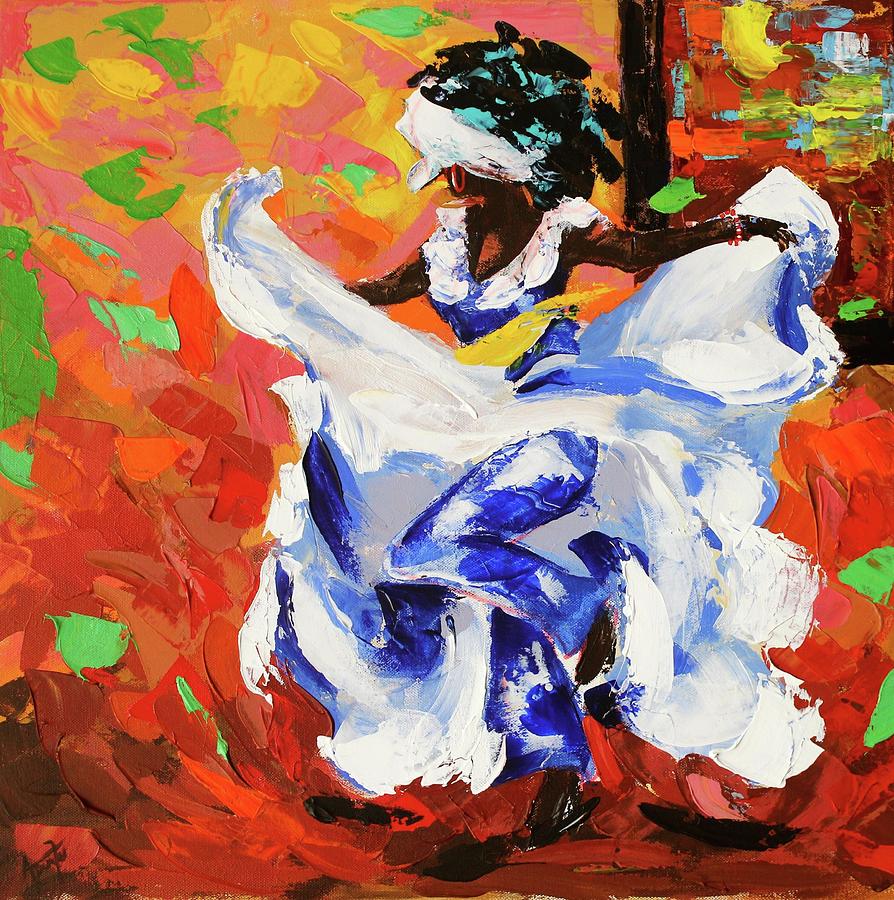Color and Movement
In today’s discussion, I wanted to highlight movement and color as two important elements of visual communication. Dondis describes movement as one of the most dominant visual forces in the human experience. He goes on to say that the implied action in fixed and unmoving pieces allow us to identify rhythm within them and categorize them as dynamic. Moreover, Dondis explains that colors have the strongest affinity to emotions. He describes color as having three dimensions: hue, saturation, and brightness. Hue being the color itself, saturation the relative purity of the hue in relation to gray, and brightness the scale of light to dark.

This painting by Janice Aponte captures the essence of a traditional Puerto Rican Bomba dancer through mainly color and movement. Even though the painting is static, movement is evident. Organic brush strokes in every which way bring it to life and visually represent the fluidity, strength, and presence of the dancer. The colors incorporated do a step more to convey the vibrancy and happiness of such a joyous dance. The piece mainly has primary colors in high saturation and brightness, making them simple, eye-catching, and vivid. The oranges and reds bring warmth and power, while the contrasting white of the dancer’s clothes make her focus of the piece and emphasizes her movements. All of these elements together contribute to illustrate the dynamism and liveliness of a dance through a static picture.